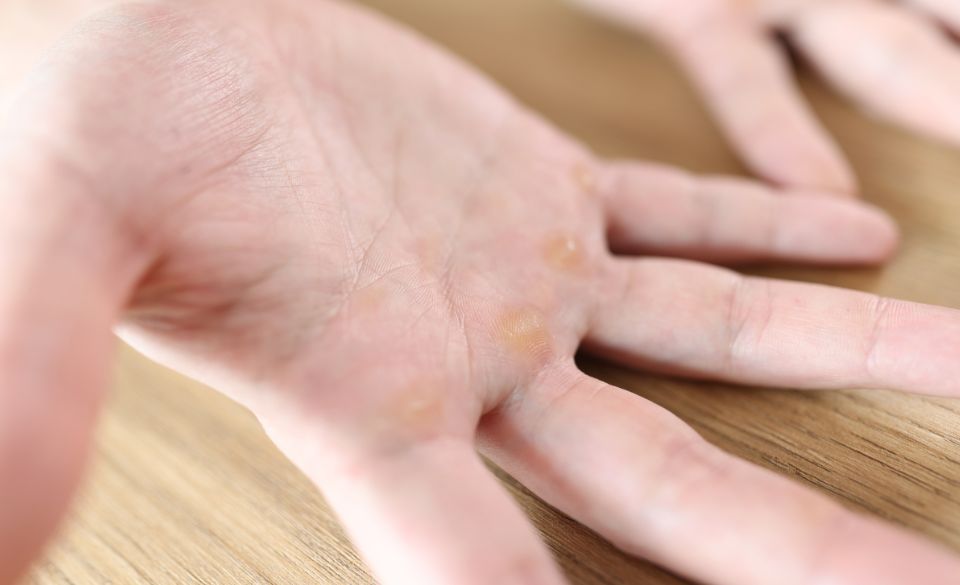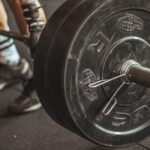
How to Fix Gym Calluses: Tips and Techniques for Soothing Calluses
If you’re an avid gym-goer, chances are you’ve experienced calluses on your hands from weightlifting or other exercises. While calluses are a normal part of strength training, they can become painful and even lead to injuries if not properly cared for. Here are some tips and techniques for fixing gym calluses and preventing future injuries.
Understanding Gym Calluses
Gym calluses are thickened areas of skin that develop on the hands as a result of repeated friction and pressure. They are commonly caused by weightlifting, pull-ups, and other exercises that require gripping and pulling. While calluses can be unsightly, they are actually a natural defense mechanism that helps protect the skin from further damage.
However, if left untreated, calluses can become painful and even lead to injuries such as blisters, tears, and infections. That’s why it’s important to take steps to care for and prevent calluses.
One of the best ways to care for gym calluses is to keep them moisturized. Dry calluses can crack and become painful, so using a good quality moisturizer can help keep the skin soft and supple. In addition, using gloves or grip pads can help reduce friction and pressure on the hands during exercise, which can prevent calluses from forming in the first place.
It’s also important to take steps to prevent infections and other complications associated with calluses. This includes maintaining proper hygiene by washing your hands regularly with soap and water and avoiding sharing towels or other personal items with others at the gym.
Tips for Fixing Gym Calluses
If you’re experiencing discomfort or pain from gym calluses, there are several things you can do to help fix the problem. Here are some tips:
1. Soak your hands in warm water: Soaking your hands in warm water for a few minutes can help soften the calluses and make them easier to remove.
2. Use a pumice stone: After soaking, gently rub a pumice stone over the calluses to remove dead skin. Avoid using a razor blade or other sharp object, as this can lead to further injury.
3. Apply a callus remover: There are various over-the-counter callus removers that can help dissolve the thickened skin. Follow the instructions carefully and avoid using these products on broken or irritated skin.
4. Use a moisturizer: After removing the calluses, apply a moisturizer to keep the skin soft and prevent further cracking. Look for a moisturizer that contains urea or alpha-hydroxy acid, as these ingredients can help break down the callus and prevent it from reforming.
5. Wear gloves or grip pads: To prevent calluses from forming in the first place, consider wearing gloves or grip pads during your workouts. These can help reduce friction and pressure on the hands and prevent calluses from developing.
6. Adjust your grip: If you’re experiencing calluses in a specific area, try adjusting your grip during your workouts. For example, if you’re experiencing calluses on your palms from weightlifting, try using a different type of grip or using lifting straps to reduce the pressure on your hands.
7. Take a break: If your calluses are particularly painful or inflamed, it may be time to take a break from certain exercises or workouts that are causing the problem. Give your hands time to heal before resuming your normal routine.
Fixing gym calluses requires a combination of removing the dead skin and preventing them from reoccurring. By using a pumice stone, callus remover, and moisturizer, along with wearing gloves or grip pads and adjusting your grip, you can effectively treat and prevent calluses. Remember to take breaks when necessary and seek medical attention if you experience any signs of infection or other complications.
Tips for Preventing Gym Calluses
Preventing gym calluses is often easier than treating them. Here are some tips to help prevent gym calluses from forming:
1. Use gloves or grip pads: Wearing gloves or grip pads during your workouts can help reduce friction and pressure on your hands. This can help prevent calluses from forming in the first place.
2. Adjust your grip: If you’re experiencing calluses in a specific area, try adjusting your grip during your workouts. For example, if you’re experiencing calluses on your palms from weightlifting, try using a different type of grip or using lifting straps to reduce the pressure on your hands.
3. Moisturize regularly: Keeping your hands moisturized can help prevent calluses from forming. Look for a moisturizer that contains urea or alpha-hydroxy acid, as these ingredients can help break down the callus and prevent it from reforming.
4. Avoid overdoing it: Overworking your hands during your workouts can increase the risk of calluses forming. If you’re experiencing pain or discomfort during your workouts, take a break and give your hands time to rest.
5. Use proper form: Using proper form during your workouts can help reduce the risk of calluses forming. If you’re not sure about proper form, consider working with a trainer or coach to ensure you’re using the correct technique.
6. Choose the right equipment: Using the right equipment can also help prevent calluses from forming. For example, using weightlifting gloves or using a thicker handle on your barbell can help reduce pressure on your hands and prevent calluses from forming.
In summary, preventing gym calluses requires a combination of using proper form, using the right equipment, and taking steps to reduce friction and pressure on your hands. By using gloves or grip pads, adjusting your grip, moisturizing regularly, avoiding overdoing it, and choosing the right equipment, you can effectively prevent calluses from forming and keep your hands healthy and pain-free.



